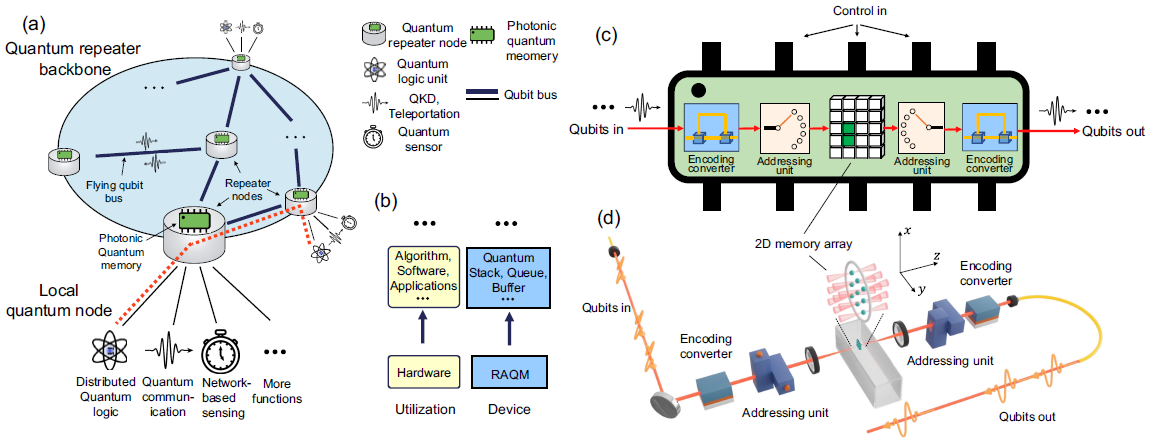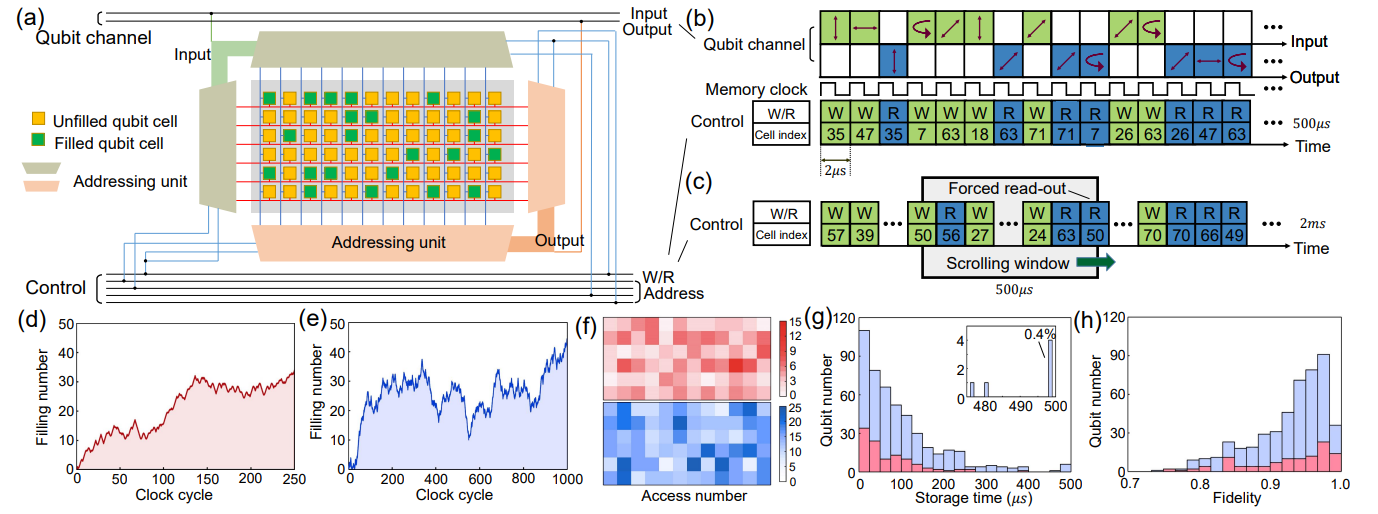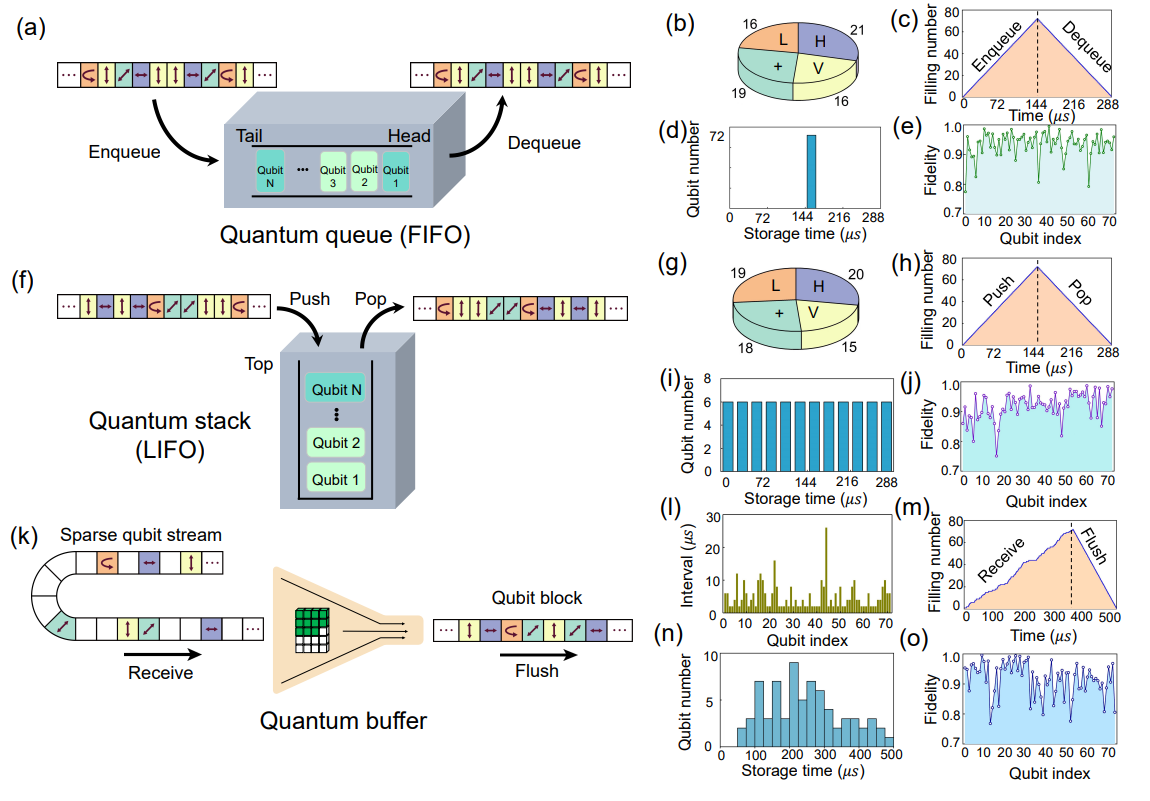The research groups of Pu Yunfei and Duan Luming of the Institute of Cross-Information realize ultra-large-scale multi-purpose quantum memory
April 29th Recently, the research groups of Pu Yunfei and Duan Luming of the Institute of Cross-Information at Tsinghua University realized an ultra-large-scale multi-purpose quantum memory that can randomly access 1,000 optical qubits in a cold atom system.
Quantum memory is a key component for realizing distributed quantum computing, quantum communication network, and networked quantum precision measurement. Optical quantum memory with high fidelity, long storage life, multiple storage modes and random access functions is a necessary condition for realizing long-distance quantum relays and ultra-large-scale quantum computing networks. Quantum memories that can be used to process extremely large streams of optical qubits have not yet been realized.

In this research work, the research groups of Pu Yunfei and Duan Luming experimentally realized 72 optical quantum storage units (comparable in scale to the largest quantum computer at present), with a storage time of >500 microseconds (the time for photons to transmit in a 100km optical fiber), and 1000 Sub-optical qubit operations (an input sequence of 72 optical qubits can produce 72! different output sequences), which is nearly 100 times the previous world record of 12 times. On this basis, this work first demonstrated an optical quantum random read and write that is close to the random read and write memory (RAM) in a classical computer. In 1000 reads and writes, the average storage fidelity is 93(5)%.

In addition, this work also demonstrates the implementation of several data structures in classical information processing in quantum systems. Quantum queue, quantum stack and quantum buffer are implemented respectively. These implementations are helpful for expanding the tool library of quantum storage and for realizing larger-scale and more complex quantum systems in the future, such as quantum operating systems.

Finally, this work demonstrates the storage, synchronization, and exchange order output of four consecutive randomly generated pairs of entangled photons. This is crucial for the implementation of quantum relays and quantum routers.
Quantum memory is a key component for realizing distributed quantum computing, quantum communication network, and networked quantum precision measurement. Optical quantum memory with high fidelity, long storage life, multiple storage modes and random access functions is a necessary condition for realizing long-distance quantum relays and ultra-large-scale quantum computing networks. Quantum memories that can be used to process extremely large streams of optical qubits have not yet been realized.

In this research work, the research groups of Pu Yunfei and Duan Luming experimentally realized 72 optical quantum storage units (comparable in scale to the largest quantum computer at present), with a storage time of >500 microseconds (the time for photons to transmit in a 100km optical fiber), and 1000 Sub-optical qubit operations (an input sequence of 72 optical qubits can produce 72! different output sequences), which is nearly 100 times the previous world record of 12 times. On this basis, this work first demonstrated an optical quantum random read and write that is close to the random read and write memory (RAM) in a classical computer. In 1000 reads and writes, the average storage fidelity is 93(5)%.

In addition, this work also demonstrates the implementation of several data structures in classical information processing in quantum systems. Quantum queue, quantum stack and quantum buffer are implemented respectively. These implementations are helpful for expanding the tool library of quantum storage and for realizing larger-scale and more complex quantum systems in the future, such as quantum operating systems.

Finally, this work demonstrates the storage, synchronization, and exchange order output of four consecutive randomly generated pairs of entangled photons. This is crucial for the implementation of quantum relays and quantum routers.

